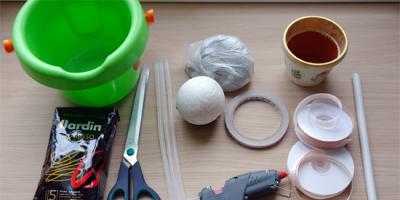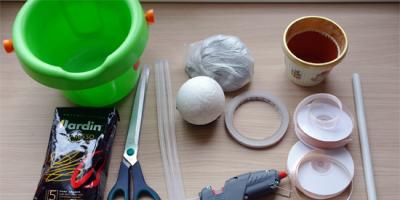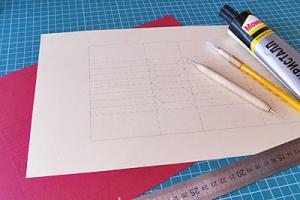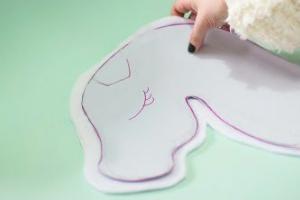Maintenance of such venues water procedures, like baths and saunas, in perfect cleanliness– this is not a whim, but a necessity. Simple cleaning is not enough. Periodic disinfection is necessary, especially when it comes to places common use. Routine treatment here is required after each visit. In this case, surfaces are treated with disinfectant compounds, for example, chlorine solution.
From time to time it is necessary to carry out complete disinfection using professional means. In public areas at least once a month, in home baths and saunas 2–4 times a year, depending on the frequency of use.
Why are there such strict hygienic requirements for cleaning premises for water procedures?
Conditions in baths and saunas are favorable for the development of pathogens for many reasons, including:
- high humidity;
- temperature changes;
- large numbers of people indoors without proper medical checks.
Bacteria and fungi fall on surfaces and become clogged with droplets of water into crevices in the wood, where they begin to multiply. Sooner or later, this leads to infection of visitors with dangerous diseases.
Some believe that microorganisms are not able to withstand the high temperature that is created in the room during procedures. But this is not true; to destroy most of them, more than 100–120 degrees Celsius is required, and such conditions are rarely created in baths and saunas.
Treatment with disinfectant compounds partially solves the problem, but is also not a reliable measure, because the use of drugs makes it possible to disinfect only surfaces. However, they are not processed hard to reach places, from which germs will spread at any moment due to water spilling or settling from steam droplets.
Benefits of professional disinfection
Organizations providing disinfection services for saunas and baths use special chemicals. Working with them is unsafe, and it is necessary to take into account the characteristics of substances that affect the health of visitors. Cold and hot fog generators are used for processing, thanks to which disinfectants get into hard-to-reach places, such as cracks in wood and between shelves.
For companies that provide services to the public and provide baths and saunas for public use, calling licensed disinfection services is a necessity dictated by the requirements of SNIP. After each treatment, disinfection services issue appropriate documents indicating compliance with sanitary and hygienic standards.
T: Which treatment agent wooden bath choose?
D: One of the most important stages in the construction of a Russian bathhouse is high-quality wood processing. Among the compounds on the construction market there are antiseptics, special oils, and varnishes. Are they all suitable? What are the differences and which is preferable?
Bathhouse is one of the most complex structures from a tree protection point of view.
High humidity and large temperature differences create favorable conditions for the development of rot, mold and mildew. Again, there is a high risk of fires. Accordingly, you need to clearly understand the specifics of the steam room, washing room and relaxation room. Since the conditions within each of these parts are very different, the means will be different.
The steam room has the highest temperature. Under its influence, chemical compounds can be released externally and enter the body through breathing and open pores. This is fraught with serious harm to health: poisoning, allergic reactions and other negative consequences. Therefore, it is better not to process the wood in the steam room at all.
A logical question: won’t it deteriorate from high temperatures and humidity? If you choose the right type of wood, it will not suffer serious damage.
Traditionally, steam rooms are built from aspen and larch. But even on this unpretentious tree, over time there will still be stains from splashes, and the shelves will wear out and darken. On functional features It won't affect the steam room.
But if you're neat appearance put the premises first, then there is only one option: treat the inside of the wood with oils designed specifically for baths. They create effective protection wood from moisture, give a pleasant shade to the wood, penetrate deep into the pores without forming a film. The last characteristic is very important, since wood with low thermal conductivity is usually used to decorate a bathhouse. The appearance of a film negates this quality: it heats up and can burn the skin.
All other means are unacceptable: they either will not provide protection or will begin to emit toxic fumes.
The washing room is not exposed to extremely high temperatures, but its main problem remains humidity, which is favorable for the formation of fungus, mold and bacteria.
Sometimes it is suggested to use a special sauna varnish for walls and ceilings. In addition to the fact that it contains potentially dangerous components, the varnish forms a thin layer of film on the wood. Its vapor permeability is extremely low, and droplets of moisture will inevitably penetrate inside through the smallest pores of the coating and accumulate. This leads to a gradual breakdown of the protective layer, it will begin to crack and peel, and the tree itself will begin to collapse and deform.
Again, let's not forget about the possibility of getting burned from the heated film. Of course, the temperature in the washing room is much lower than in the steam room, but hot water often flows here, and air comes in from the neighboring steam room when the door is opened. In general, it's better not to take risks.
The best option ─ natural oils. They are absolutely safe for health and will reliably protect the wood from moisture, mold and mildew.

Restroom
Everything is simpler here, since this part of the bathhouse does not have any special features. You can proceed from aesthetic preferences. If you want to get a smooth and shiny surface or radically change the natural color of the wood, then choose varnishes or paints.
If the goal is to emphasize the relief of wood, its naturalness, then oils for interior work are preferable.
There is no need for any special additives in the rest room product. The main thing is to use abrasion-resistant products for the floor. In oils this effect is achieved thanks to high content natural wax, special chemical compounds are added to varnishes and paints.

Thus, the means for treating wood in a bathhouse are chosen taking into account the characteristics of the steam room, washing room or relaxation room.
If we talk about the facade, the situation is different from any other wooden structure only with increased requirements for fire resistance. This is achieved through special impregnation of wood, as a rule, even at the stage of its preparation for construction.
The only negative is that other coatings do not adhere well to such impregnation, and they last less. If the decor of the facade is not the least important and you want to emphasize the beauty of the tree, give it specific color, then you should sheathe the outside of the bathhouse and tint the casing.
How to treat the inside of a Russian bathhouse
A bathhouse is one of the most complex structures in terms of protecting wood. High humidity and large temperature differences create favorable conditions for the development of rot, mold and mildew. Again, there is a high risk of fires. Accordingly, you need to clearly understand the specifics of the steam room, washing room and relaxation room. Since the conditions within each of these parts are very different, the means will be different.
How to treat a wooden bath
To protect the log house from destructive factors, you should not use all the preparations at once and indiscriminately. Each product has its own purpose; if used incorrectly, the condition of the walls can worsen.
Purpose of protective materials for a wooden bath

Modern preparations are able to protect the log bathhouse from all kinds of natural and physical influences:
- UV protection. Always protect the tree from the sun's ultraviolet rays. The sun's rays burn out natural resins in logs and destroy the structure of the wood. The material ages and becomes gray. To treat a log bathhouse, use compounds that create an ultraviolet filter. Containers with such impregnation are marked with the “UV” symbol.
Types of protective coatings for wooden baths
Means for internal processing wooden bath

Preparations for interior walls are recognized by the inscription “For sauna”. High-quality products can be bought in the company store.
- The walls of the log house in the steam room and washing room are treated with special substances to natural basis without artificial additives that do not emit toxic fumes at high temperatures and humidity. Such preparations belong to the highest degree of environmental safety.
Products for external treatment of wooden baths

Coatings used to protect the outside of a bathhouse are divided into impregnations and varnishes.
- Impregnations can protect wood from ultraviolet radiation, but cannot withstand precipitation. Water washes away protective substances from wood, the sun burns bald spots on it, as a result, the appearance deteriorates, and the logs quickly deteriorate. Impregnations protect wood for 5 years. Therefore, it is necessary to re-coat the walls with protective substances.
Types of antiseptics for wooden baths

When purchasing an antiseptic, find out what type it is:
- Washable antiseptic. It is made on the basis of metal salts. Salts are washed out with water, so they are used for processing interior spaces baths - dressing room and living room. Washable ones are not used to cover the outside of the bathhouse, the walls of the steam room and the washing room.
Features of applying protective coatings for a wooden bath

The work is carried out immediately after the walls are erected, before caulking. If the procedure is postponed, cover the log house with film to protect it from precipitation. Before impregnation, clean the walls from dust, using a vacuum cleaner. Check that they are dry. Apply a protective agent to the log and rub it over the surface with a brush. Let the impregnation dry and repeat the procedure.
Practice shows that a log house covered with protective agents retains its original color for a long time and external beauty, is not afraid of natural threats. It’s better to spend some money on purchasing protective drugs at the construction stage than to dismantle the structure and replace rotten logs later.
Do-it-yourself wooden bath treatment
A wooden log house retains its performance qualities for a long time if the beams are promptly protected from adverse factors. Let's consider the main reasons for damage to bathhouse walls and methods of protection
How and with what to treat the lining inside the bathhouse for high-quality wood protection
Building a bathhouse is a responsible task that requires serious consideration and includes many rules and strict adherence to technology. The functionality and safety of the structure depend on high-quality planning, construction and proper execution of finishing work.
The most popular material for building baths is wood. It is used as a material for the construction of walls and interior decoration premises. This article is devoted to questions on the topic of how and with what the lining for a bath is processed.

Processing of lining inside baths.
Tools for work
In order for the lining to be processed in a bathhouse according to the painting technology, you will need a certain set of tools.
- Paint tray.
- brush, paint roller or spray gun.
- Protective clothing, rubberized gloves, respirator, eye protection glasses.
- Solvent.
- Paint and varnish materials for processing.
The choice of how to treat the lining in a bath depends on personal preferences and financial capabilities. It is worth noting that saving on processing materials is inappropriate. These works are necessary to extend the service life of wood and protect it from exposure to steam and high temperatures.
When is treatment necessary?
Impregnation of the sauna lining is carried out in two stages. The first is carried out before installing the lining. This is especially important in a room with a high level of humidity, which includes a bathhouse. It is necessary to process not only the cladding, but also the sheathing to which it is attached.
The final processing of the lining in the bathhouse is carried out after installation. In the future, with active use, professional builders recommend carrying out treatment at least twice a year.

Processing the lining before installation.
Note: treating the surface of the lining before coating with an antiseptic can significantly save paint and varnish materials.
Selection of paint and varnish materials for processing
In order to understand how to process lining in a bathhouse, you need to understand the materials existing for these purposes.
Their choice today is very wide.
- Drying oil. It is used for internal and external processing of wood, but practically does not protect the material from exposure to steam.
- Acrylic lacquer. Retains natural color, protects from ultraviolet radiation, but when exposed to high temperatures it emits a strong odor.
- Solvent varnish. Not a bad antiseptic. The final price of the material is very low, but it is also not suitable for cladding saunas and bathhouses, since when heated it emits a pungent odor and toxins.
- Specialized impregnation. This combination of materials is specially created for baths and saunas. The advantage is the absence of odors and resistance to high temperatures in high humidity.
It has no special application requirements and is perfect for DIY use.

Protection of lining from aging.
Carrying out surface treatment
Surface treatment
The following instructions will help you carry out the process of performing this work.
- To start working with your own hands, you need to clean the surface from dust. To do this, you can use hot water with the addition of soda at the rate of 300 g per 10 liters of water.
- Then the surface must be degreased.
- To get more flat surface the lining must be sanded. These works can be carried out using pumice.
- Next, you need to apply an antiseptic to the lining to protect against fungus.
- After this, you can directly impregnate the lining.
- In order to understand how to treat the lining in the dressing room, it is necessary to assess the degree of influence of temperature and humidity in it. If the influence of these factors is significant, the selection criteria should not differ from the standard influence.
- After the impregnation has dried, the lining can be painted with special paints.
Tip: When applying paint with a brush, apply the final layer using movements parallel to the grain of the board. This way, brush marks will be almost invisible.
- The applied paint must be thoroughly mixed. This promotes uniform color and drying of the surface.
- Before applying, you need to make a test stroke. This will ensure that the paint is at the correct thickness and making the right choice her colors.
- In order to achieve the best painting effect, the paint should be applied in as thin a layer as possible.
- Metal elements can be painted with a special sponge.
- The primer is tinted to match the color of the coating.
- Painting of lining should not be done in hot weather.
Advice: pay special attention to the processing of the ends of the lining. This is one of the most vulnerable places.
Tip: if you get dirty while working, you can wash your hands and other parts of the body with vegetable oil. It is harmless, unlike solvents.

A striking example of excellent color selection for a bath.
Tip: If a light film appears on the surface of the paint, this may negatively affect the uniformity of the coating applied.
The way out of the situation is a piece of nylon dipped in paint. The brush can be dipped through it.
Caring for lining
Most effective method Caring for the lining is timely ventilation. You can clean the wooden surface with a damp cloth without using household chemicals.
Serious contamination should be cleaned after the board has dried. To do this, you need to sand the contaminated areas with fine-grained sandpaper.
Nowadays you can also purchase professional bath care products. With their help, almost any contamination is eliminated without damaging the lining. It is worth noting that the price of such materials is not affordable.

Timely cleaning of the bathhouse is the key to cleanliness and comfortable use.
Conclusion
Currently, one of the most popular materials for finishing baths with your own hands is lining.
IN construction stores There are a lot of materials intended for processing lining. The choice depends on personal preferences and financial capabilities. The main requirement for surface treatment is compliance general rules working with paints and varnishes, which are prescribed by the instructions for the selected material. Accuracy and a serious attitude to this work will ensure excellent results.
How to treat lining inside a bathhouse, in a waiting room: video instructions for do-it-yourself impregnation, price, photo
6) How to treat the lining inside the bathhouse, in the dressing room: video instructions for do-it-yourself impregnation, price, photo
How to treat lining inside a bathhouse - practical tips and reviews

Wood is optimal material for the construction of a bathhouse. The material has a huge number of advantages. But if selected conifers, over time, under the influence of high temperatures, resin begins to release. Not everyone likes this smell, and touching such a surface can cause burns. Because interior walls The premises are lined with clapboard. At the same time, you need to know how to treat the lining inside the bathhouse.

Protecting bath walls from dampness
This finishing method improves the aesthetic features of the interior and has a number of advantages:
- protection of external walls from dampness and rotting, while additional thermal insulation is created in the internal space;
- you can choose a board that has pleasant and beneficial aromatic properties, thereby enhancing the beneficial effects of bath procedures;
- taking various varieties trees, you can achieve excellent results. This decoration will look interesting and tasteful.
Processing the lining inside the bathhouse is mandatory requirement to extend its service life and preserve its appearance.
How to protect your steam room
Upon completion of the interior finishing work, you need to find out how to treat the lining inside the bathhouse. This process cannot be delayed, because under the influence of high temperatures the lining will quickly begin to deteriorate.
When cheap types of wood are used, it begins to darken, become dirty, and lose its attractive appearance. When it comes to expensive varieties, they will withstand such exposure a little longer, but their service life will be significantly reduced.
Natural means of treating lining inside the bathhouse (linseed, hemp oil) have been replaced by improved means that can protect the surface from moisture, pollution, rotting, fungal infection and damage by insects.

Means for processing lining inside the bathhouse
Finnish companies, which are known for the special features of steam rooms, have especially succeeded in this area. The Tikkurila company produces a large assortment of excellent products for bath linings:
- Supi Saunasuoja – acrylic with water based. It can be colorless and is perfect if you are wondering how to paint the lining inside the bathhouse;
- Supi Laudesuoja – oil-based coating for benches and seats;
- Supi Saunapesu will help to disinfect, whiten, and dissolve lime deposits.
Domestic funds can also be highlighted:
- Usadba U-409 – will prevent dirt and darkening;
- Eurotex Sauna – oil suitable for coating wooden shelves.
Surface treatment varnishes
When deciding how to cover the lining in a bathhouse, you should not discard the option of a varnish coating. We are not talking about ordinary paints and varnishes. They are not suitable for use in such conditions. Varnishes have been developed for steam rooms that are characterized by heat resistance and increased resistance to moisture. They create a decorative polymer coating and effectively protect the tree from various negative influences.

Coating the lining in the bathhouse with varnish
As an example, you can take the products of the domestic manufacturer “Rogneda” Evrotex Sauna - a colorless acrylic semi-matte varnish coating containing wax and an antiseptic. Capable of protecting wood covering at temperatures up to 150 °C. It should be applied in two layers using a brush or spray.
Covering for boards in the washing area and dressing room
The wooden surface in the washing room is exposed to water vapor and hot water. Therefore, the importance of antiseptics is obvious. The coating can be done with SENEZH SAUNA antiseptic. It will prevent the formation of fungus and protect against insects at high humidity and temperature.

Antiseptic for processing lining
Surfaces that are not in contact with the human body can be treated with Dulux Celco Sauna semi-matte varnish. It has thermal and moisture-proof properties. Withstands temperatures up to 120 °C without tarnishing and is odorless. Requires two coats. It can be used not only on wood, but also on stone, brick, and concrete surfaces.
Run these Finishing work quite possible on your own. The process will not take much time. And after a few days you will be able to enjoy the updated bathhouse.
Processing lining in a bath
It is very important to treat the lining in the bath by special means to extend the life of materials and to protect human health. You can do the work yourself.
The formation of soot and plaque on the walls in a Russian bath occurs as a result of a fire hazard or improper operation of heating equipment.
The smallest particles of soot can not only settle on wooden surfaces, but also penetrate deep inside. For this reason, it is important to promptly get rid of unpleasant plaque on walls and other surfaces.
How to quickly and effectively wash off soot in a bath without harming the wood?
Tree - natural material, which is highly hygroscopic. Along with water wooden surfaces capable of absorbing any type of contaminant - soot, soot, sweat, dust, etc. Therefore, it is not recommended to clean wood floors, walls and ceilings covered with soot with water.
When considering the question of how to wash off soot in a bathhouse on walls and other bases, you need to exclude the following products:
- water;
- laundry or liquid soap;
- soft or abrasive sponges;
- hard brushes;
- spray.
Such products can be used for final cleaning after carbon deposits have been removed from the wood.
To clean the walls and floor of the bathhouse from plaque and soot, it is recommended that all work be carried out using personal protective equipment:
- rubber gloves;
- glasses;
- gauze bandage or petal respirator;
- robe;
- cap or scarf.
Many owners wonder how to clean a bathhouse from dirt and soot with their own hands. There are two available methods cleaning:
- mechanical devices;
- chemical compositions.
Mechanical cleaning
You can safely remove the resulting soot from ceiling, wall and floor surfaces using special devices - a scraper with a sharp base or a spatula. They allow you to dry clean every centimeter of surface dirt. To apply similar method Cleaning in practice will require a lot of free time and physical endurance.
To prevent serious contamination of surfaces after completion of each fire sauna stove, the floor and walls must be thoroughly cleaned with a soft brush intended for wood.
To simplify the task of removing soot, experts recommend using grinding machine with a petal-type circle with a diameter of up to 12.5 cm and a grain size of 35 units. You can remove the resulting dust after cleaning the surfaces with a clean rag and soap solution.
Chemical cleaning
The simplest and most reliable way to remove contaminants is to use liquid chemical compositions. They are evenly applied to the surface to be treated according to the instructions, and after a while they are washed off along with the dirt. Highly concentrated preparations contain alkaline components that promote rapid removal of soot from surfaces without damaging the wood structure.
Important! To clean wood surfaces, do not use abrasive powders or cleaning products. They can be replaced with neutral degreasing gels.
To quickly clean walls and floors, you can use a mop with a telescopic handle.
No less effective in the fight against soot are chemical sponges impregnated with deep penetration substances. They contribute to the quick and safe removal of the smallest particles of soot and soot that have penetrated the wood structure.
The principle of working with sponges is quite simple: holding the sponge with one hand, clean the surface from top to bottom.
Important! Chemical sponges quickly become clogged and become unusable, so for high-quality work it is recommended to purchase a sufficient supply of material.
Next, pour into the container clean water, to which a detergent composition is added, for example for washing dishes, or any other degreasing agent. The soot is washed off with smooth movements using a soft sponge.
Cleaning soot from heating equipment
If heating equipment is used incorrectly: a stove or boiler, soot particles settle on the surface of the device and the objects that surround it. A sauna stove can be made of metal or brick, so the methods for removing soot may differ.
Metal constructions
You can clean soot from metal stoves with a clean damp sponge and soapy water. To remove a dense layer of soot, it is recommended to use fine river sand or broken bricks.
Such abrasive materials clean the metal quite well, but also contribute to its destruction and corrosion. Therefore, the use of abrasives is allowed only in certain cases, and after removing soot, it is recommended to clean and paint the damaged surfaces.
An effective cleaning method metal furnace- These are neutral chemical compounds and removers that gently clean the surface of soot without damaging it.
In some cases, cope with soot and soot on metal surfaces water diluted in it will help citric acid, Coca-Cola or steel bristle brush.
Brick structures
Now let's figure out how to clean those that are most often subject to the formation of soot and soot.
To effectively and safely remove contaminants from refractory bricks, you can use a simple detergent and a clean sponge. The product in the required volume is diluted in water and applied with a sponge to the surface.
To protect the skin of your hands from exposure to chemical compounds and aggressive substances, it is recommended to wear protective rubber gloves when cleaning.
To completely remove soot from brick surface The composition must be thoroughly beaten to obtain a thick foam. The treated surface should be left for a few minutes and rinsed with clean water.
The next way to process brick is to use vinegar essence. To obtain a concentrated essence, you need to dilute table vinegar in tap water in proportions 1:2 (1 glass of vinegar to 2 glasses of water). The brick is thoroughly moistened with liquid and left for 10 minutes.
If the surface of the stove has not been washed for a long time, so the soot has penetrated deeply into the brick pores, you can not dilute the vinegar, but immediately apply it to the surface. brickwork. The procedure is then performed in the same order. After cleaning is completed, the brick is cleaned with a soft brush and washed with clean water.
Periodic cleaning of stoves and bathhouse surfaces from soot not only extends the life of heating equipment, but also ensures safe bathing procedures.
In addition, excess soot and soot formed can cause fire hazards. Constantly keeping the bathhouse clean and tidy prevents the appearance of serious contamination on all surfaces of the building.
Hygiene and sauna use
Hygiene and sauna use
Disinfection and cleaning of sauna premises
The sauna room must provide the necessary hygienic environment, which is especially important from a microbiological point of view. As already mentioned, grates should not be placed on the floors of wet sauna rooms: they can contribute to the spread of germs. The requirement to change the water in a cold pool every day is explained by the rapid contamination of the water and the need to clean and disinfect the pool walls.
Before entering the steam room, it is necessary that visitors wash themselves well with soap in the shower, and in the steam room they sit on the shelves with a towel under them. You should wear bath slippers on your feet, and be sure to take a shower before entering the cold pool.
All these procedures are necessary in order to eliminate the spread of bacteria that are released in large quantities with sweat. A significant portion of these bacteria can remain in steam rooms and on the floors of wet rooms, so it is important to clean these areas thoroughly. If the sauna is open all day, cleaning and disinfection should be carried out throughout the day. Disinfectants used in the steam room (mainly in relation to wood) should not have a negative reaction. Cleaning and disinfection begin in the steam room after the sauna has finished operating.
The sauna worker must turn off the steam room heater, leave the steam room door open, and use a brush with a soda solution to wash the shelves and part of the wall cladding against which visitors lean. Next, you need to wash the walls of the steam room and the shelves with a hose. The doors remain open until the next day. During cleaning, the floor is washed and disinfected with a special solution. Once a week you need to take the shelves out of the steam room and wash them with a special solution and a brush, then disinfect and rinse. Rinsing ensures not only the cleanliness of the shelves and floor, but also the cleanliness of the air in the steam room. The processes must be carried out sequentially: wash, disinfect, rinse. Recommended disinfectants are given in table. 13.
Table 13 Disinfectants


It should be borne in mind that chlorine preparations, when stored in a damp room, lose their disinfectants; in dry form they do not have disinfectant properties at all, so they should only be used in solution. The use of mixtures is also ineffective.
The disinfectant solution (2% chloramine) is prepared as follows: 200 g of chloramine (about 0.2 l) is dissolved in 10 liters of water (bucket). The disinfectant solution must be prepared carefully, measuring the appropriate dose of the disinfectant.
Disinfection must be carried out by a suitably qualified worker.
Buffet
The buffet should have a stove, a large refrigerator, a table, and the necessary storage space. It is convenient to connect the buffet and the rest room with an opening so that visitors in the rest room can serve themselves. Food should be easy to prepare.
The buffet should have a sink with hot water for washing dishes, a warehouse should be made nearby; You should also remember about the space for containers.
Requirements for linen; related procedures
The visitor must have a clean towel for each visit to the steam room. It’s convenient to use two-color towels: you can sit on one side, and the other is turned toward the shelf. In large saunas, towels can be numbered with large numbers so that visitors do not get confused. It is advisable that each visitor have their own bath slippers.
Basic procedures that can be taken in conjunction with the sauna, solarium treatments and massage. For each procedure, a separate room of sufficient space and with special equipment must be allocated. For a solarium, the room must have a height of at least 3 m and be well ventilated. For massage there must also be a separate room with an area of more than 7 m2 with a shower and a massage table.








